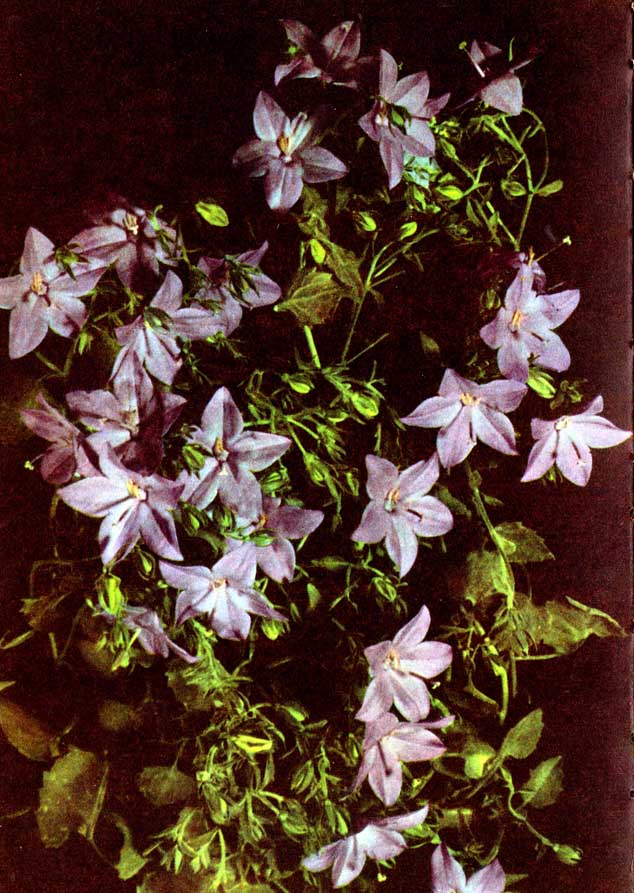Campanula isophjlla Moretti
family: bluebell family – Campanuläceae
Name: Nach campänula lat. = small bell, bell (Botanical and German genus name refer to the bell shape of the flowers); isophjllus, -a, -um years. = equilateral (unlike other species, at which reason- and stem leaves are not the same size).
origin: Northern Italian coastal strip of the Mediterranean area (Liguria) with a mild climate. In its natural habitat on steep slopes with long shoots lying on the ground.
Heyday: July to September.
Cultivation: Mostly from top cuttings in spring; also by dividing older plants with numerous power heads.
Care requirements: Heller, cool and airy location, protected from full sun during midday. during growth- and flowering period, ample soil moisture is required; it can then be watered repeatedly with a weak nutrient solution. One should hibernate bright, fairly dry and cool (at about 10 to 12 °C), because the plants need a rest period. If the stand is too warm, they will sprout prematurely and are thereby weakened. The previous year's trunk parts should be preserved over the winter if possible, because the plants then bloom particularly richly on longer shoots. If the location is too damp and too dark, the plants will sprout easily during this period and become unsightly or unusable due to rot. A repot, with older copies only all 2 to 3 years is required, can be carried out in the spring at the beginning of the new shoots. This opportunity may also be shared. The soil is a mixture of loamy compost soil, Ratio of peat and sand 3:1:1 suitable. Cuttings are best made in indoor gardening in the summer and use the heads of non-flowering shoots, several of which are placed in small pots with sandy soil.
Special: The undemanding, dainty plants with hanging or ascending growth are usually kept in hanging baskets or wall pots. You can also tie them to small trellises. In summer they thrive quite well on sheltered balconies. In addition to the species with dull blue flowers, the variety is also popular, “Alba” (syn. was. barely heard.) drawn with white flowers. The variety is also popular “Mayi” (syn. was. mqyii hears.) with larger pale blue flowers and downy-hairy leaves.
